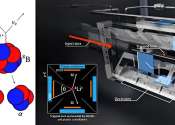Beta-decay measurements in mirror nuclei pin down the weak nuclear force
The Standard Model of Particle Physics is scientists' best understanding of the forces that describe how subatomic particles interact. The Standard Model encompasses four forces: the strong nuclear force, the weak nuclear ...









